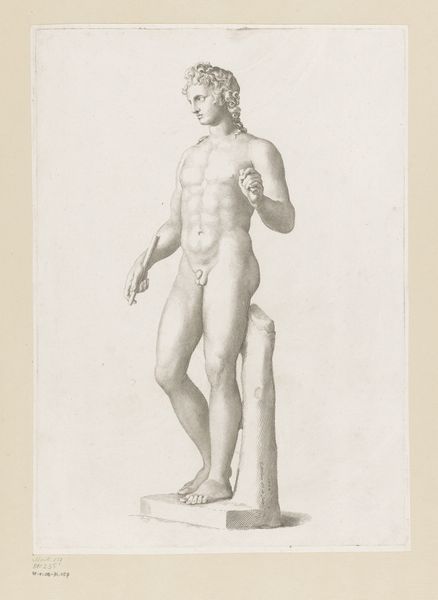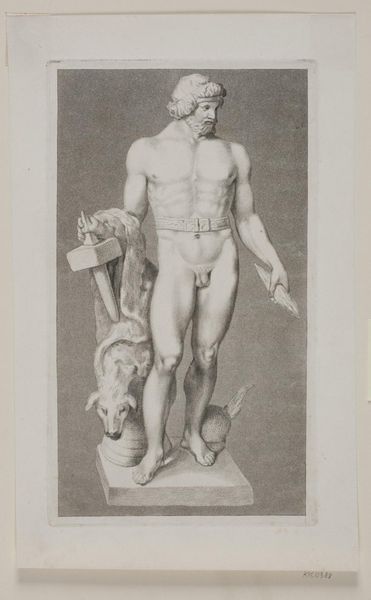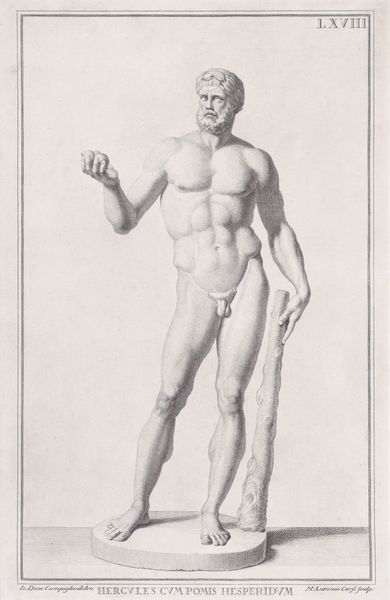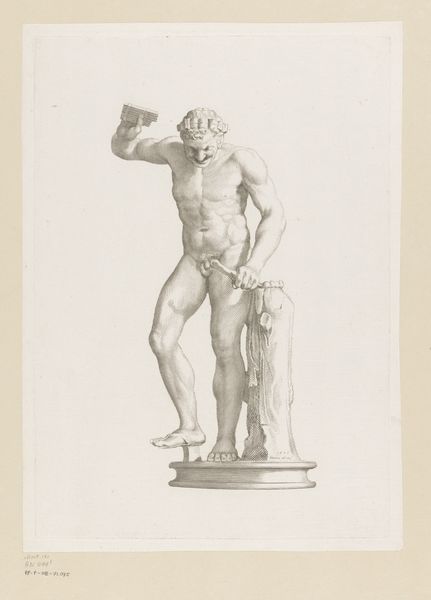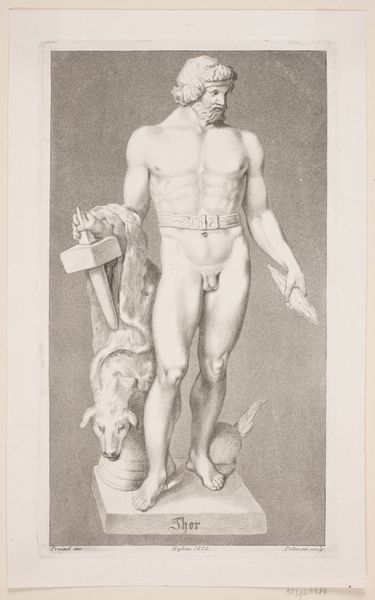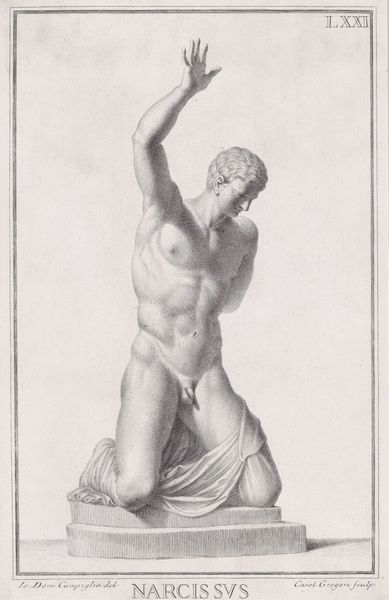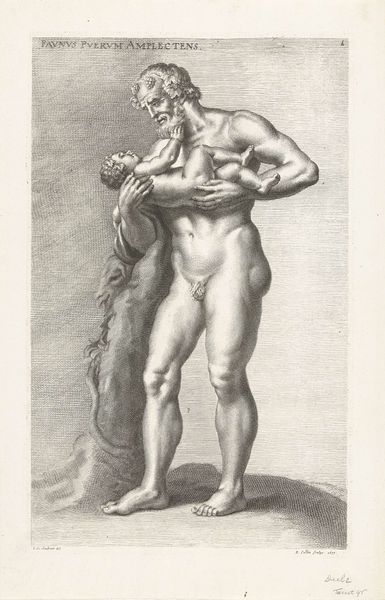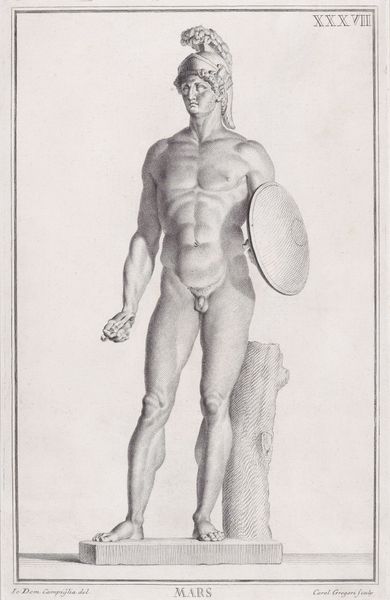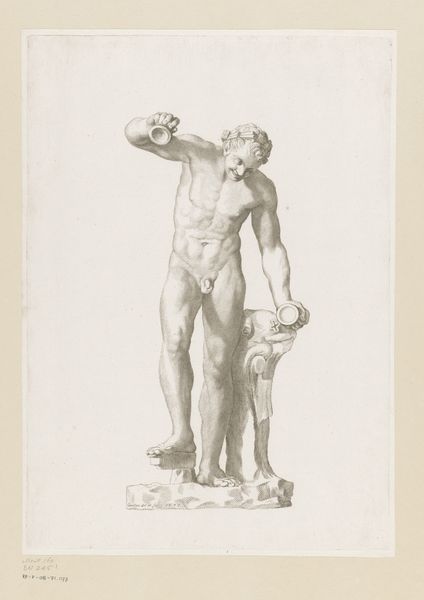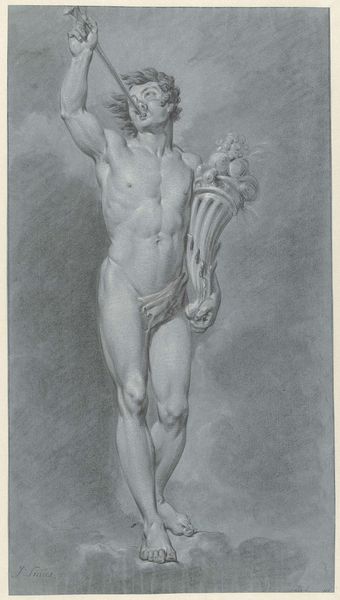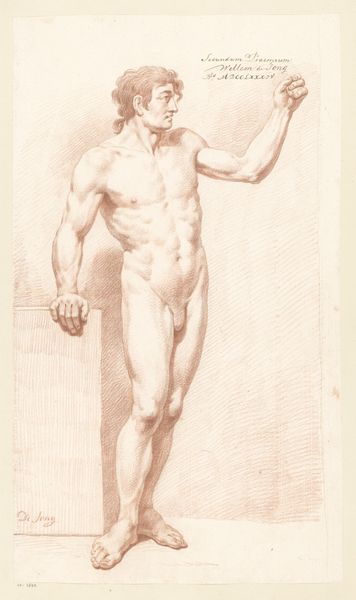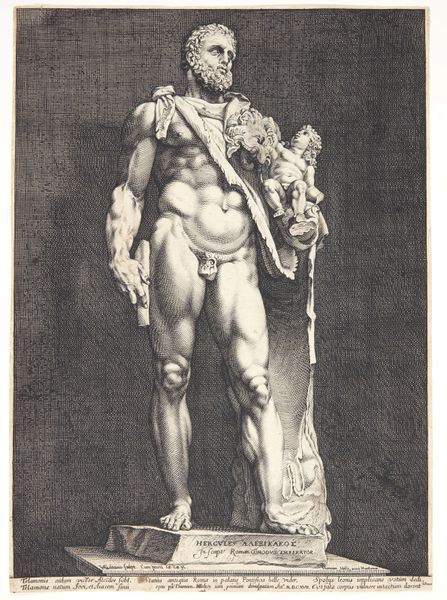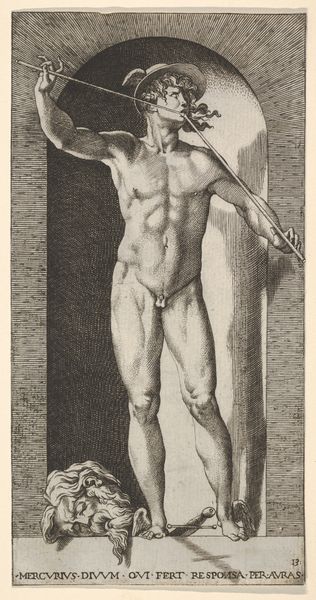
Plate LI (51): Bacchus, from "Museum Florentinum" (Statuae antiquae dorum et virorum illustrium) 1734
0:00
0:00
drawing, print
#
drawing
#
baroque
# print
#
sculpture
#
greek-and-roman-art
#
figuration
#
history-painting
#
nude
#
male-nude
Dimensions: Sheet: 14 15/16 × 10 1/16 in. (38 × 25.5 cm) Plate: 13 7/8 × 9 in. (35.2 × 22.8 cm)
Copyright: Public Domain
Carlo Gregori created this print of Bacchus, from "Museum Florentinum" some time in the 18th century. The plate presents us with a neoclassical aesthetic, emphasizing idealized form and balanced composition. Notice the figure of Bacchus; the god is rendered with meticulous detail. The artist used fine, controlled lines to define the musculature and contours of the figure. The god’s pose, with one arm raised holding a cup, is carefully balanced by the drape and the goat at his side, creating a sense of harmony. This print is not just a visual record; it engages with Enlightenment ideals, celebrating classical antiquity and rational order. The emphasis on clear lines and forms reflects a desire to understand and categorize the world through visual representation. Yet, by presenting Bacchus, a deity associated with ecstasy and irrationality, the artwork introduces a tension between order and chaos, inviting viewers to question the limits of reason. Ultimately, this print embodies the complex dialogue between form and content. It functions as both an aesthetic object and a cultural artifact, reflecting the intellectual currents of its time.
Comments
No comments
Be the first to comment and join the conversation on the ultimate creative platform.
